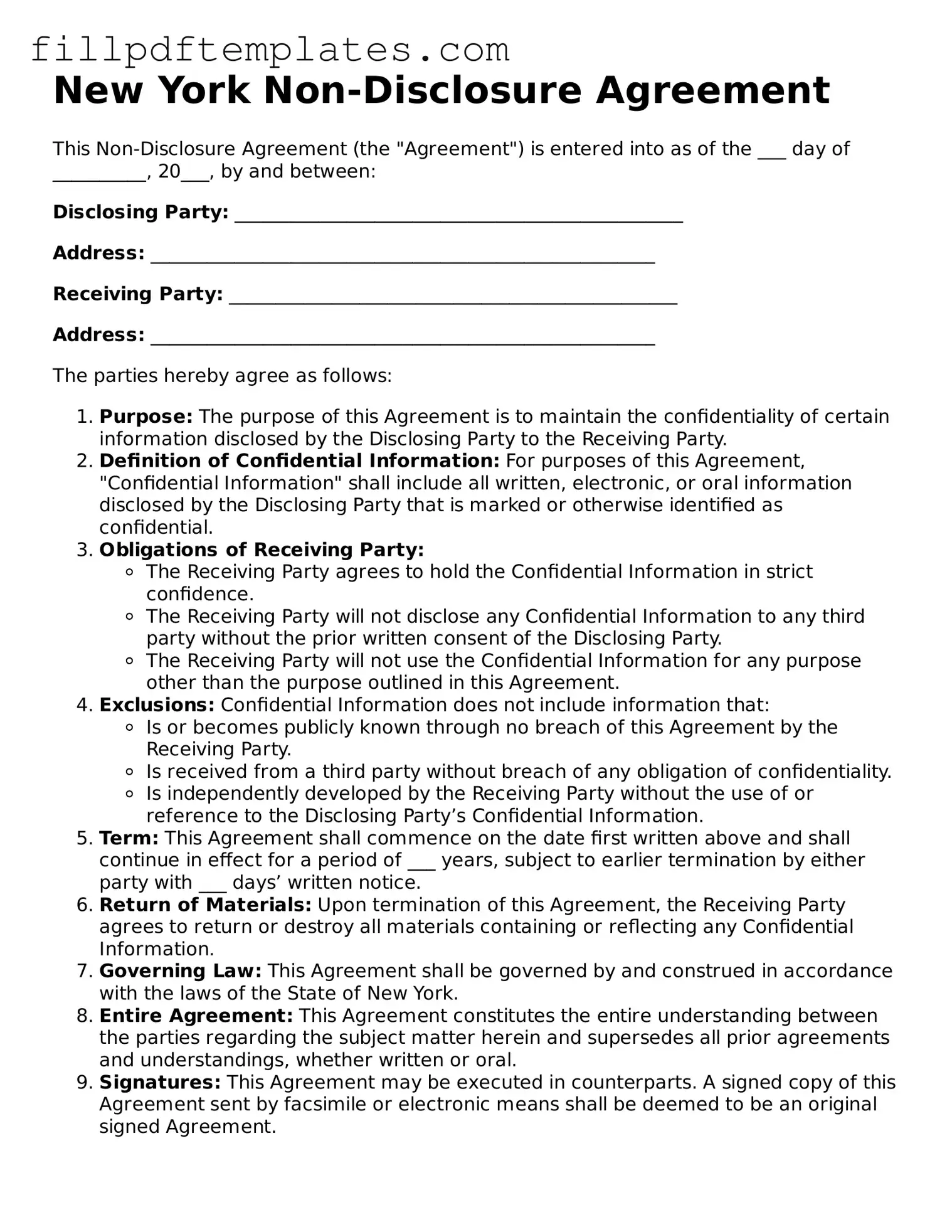New York Non-Disclosure Agreement
This Non-Disclosure Agreement (the "Agreement") is entered into as of the ___ day of __________, 20___, by and between:
Disclosing Party: ________________________________________________
Address: ______________________________________________________
Receiving Party: ________________________________________________
Address: ______________________________________________________
The parties hereby agree as follows:
- Purpose: The purpose of this Agreement is to maintain the confidentiality of certain information disclosed by the Disclosing Party to the Receiving Party.
- Definition of Confidential Information: For purposes of this Agreement, "Confidential Information" shall include all written, electronic, or oral information disclosed by the Disclosing Party that is marked or otherwise identified as confidential.
- Obligations of Receiving Party:
- The Receiving Party agrees to hold the Confidential Information in strict confidence.
- The Receiving Party will not disclose any Confidential Information to any third party without the prior written consent of the Disclosing Party.
- The Receiving Party will not use the Confidential Information for any purpose other than the purpose outlined in this Agreement.
- Exclusions: Confidential Information does not include information that:
- Is or becomes publicly known through no breach of this Agreement by the Receiving Party.
- Is received from a third party without breach of any obligation of confidentiality.
- Is independently developed by the Receiving Party without the use of or reference to the Disclosing Party’s Confidential Information.
- Term: This Agreement shall commence on the date first written above and shall continue in effect for a period of ___ years, subject to earlier termination by either party with ___ days’ written notice.
- Return of Materials: Upon termination of this Agreement, the Receiving Party agrees to return or destroy all materials containing or reflecting any Confidential Information.
- Governing Law: This Agreement shall be governed by and construed in accordance with the laws of the State of New York.
- Entire Agreement: This Agreement constitutes the entire understanding between the parties regarding the subject matter herein and supersedes all prior agreements and understandings, whether written or oral.
- Signatures: This Agreement may be executed in counterparts. A signed copy of this Agreement sent by facsimile or electronic means shall be deemed to be an original signed Agreement.
IN WITNESS WHEREOF, the parties hereto have executed this Non-Disclosure Agreement as of the date first above written.
Disclosing Party:
Signature: _________________________________ Date: ________________
Name: ______________________________________
Title: ______________________________________
Receiving Party:
Signature: _________________________________ Date: ________________
Name: ______________________________________
Title: ______________________________________
